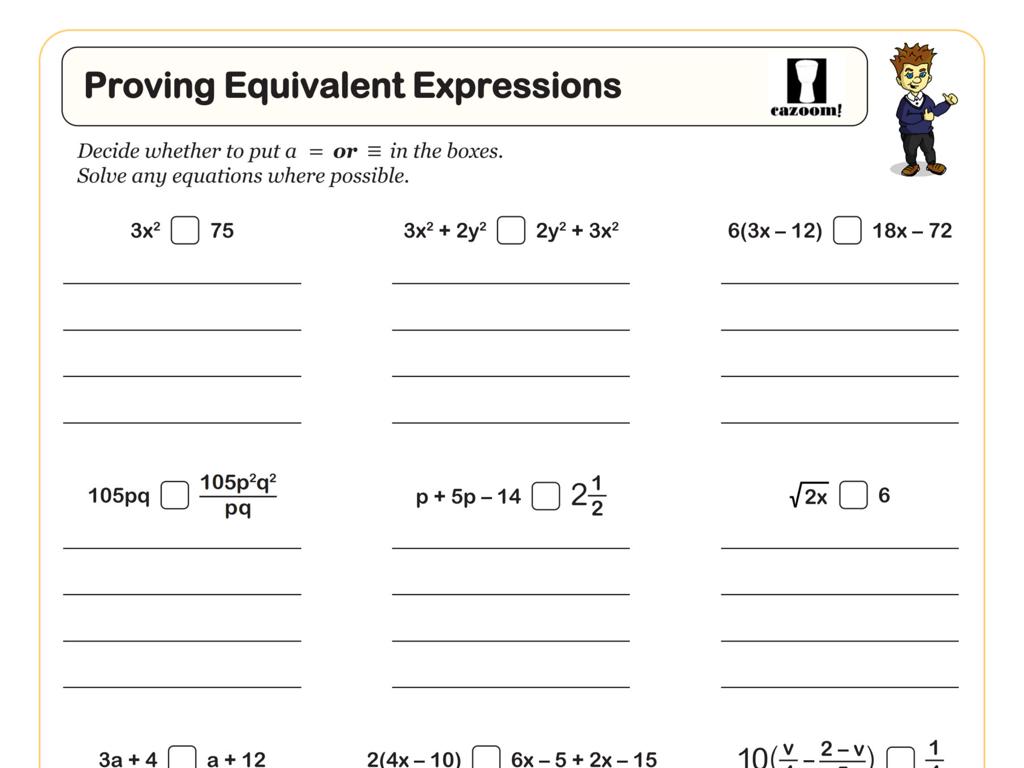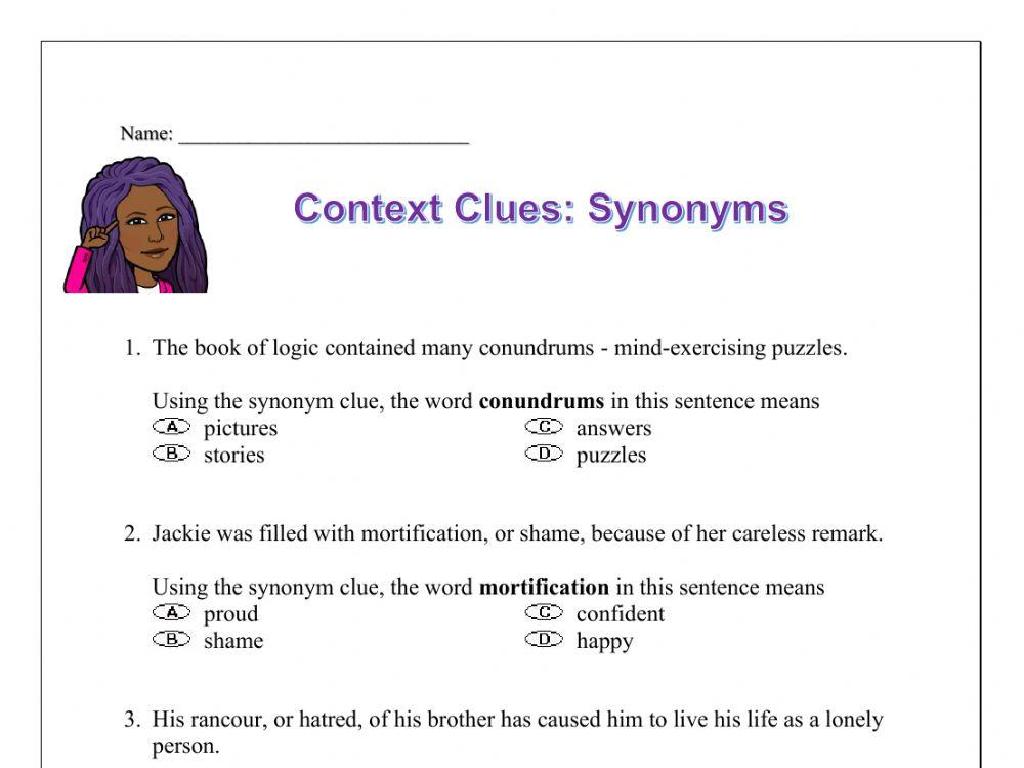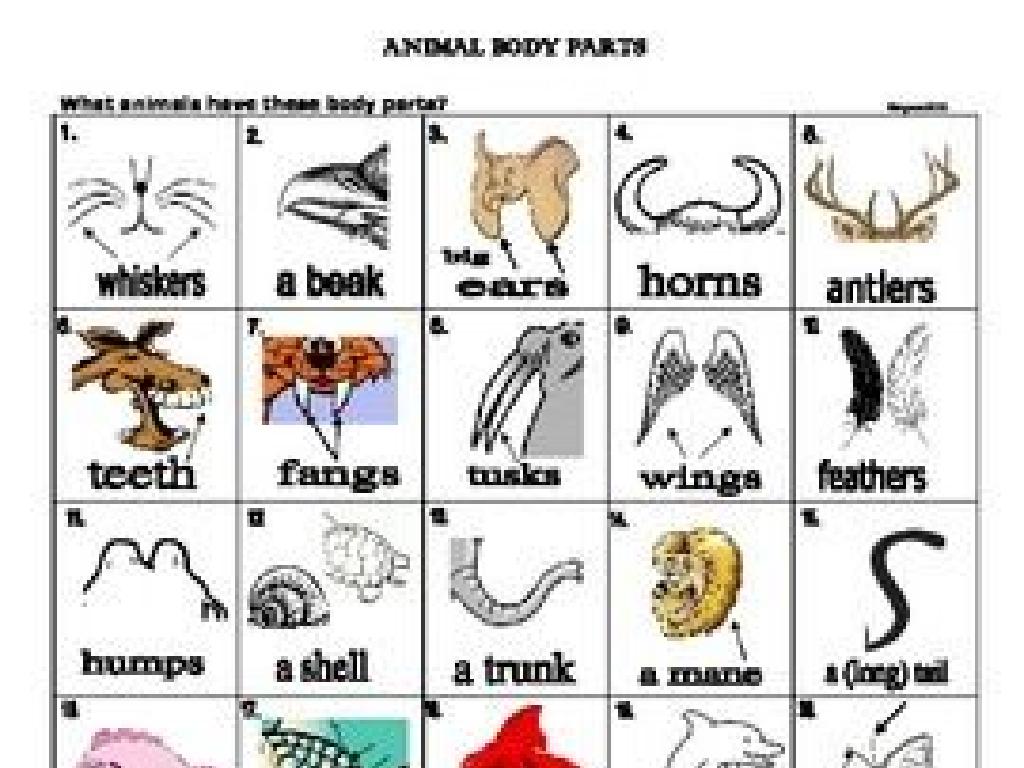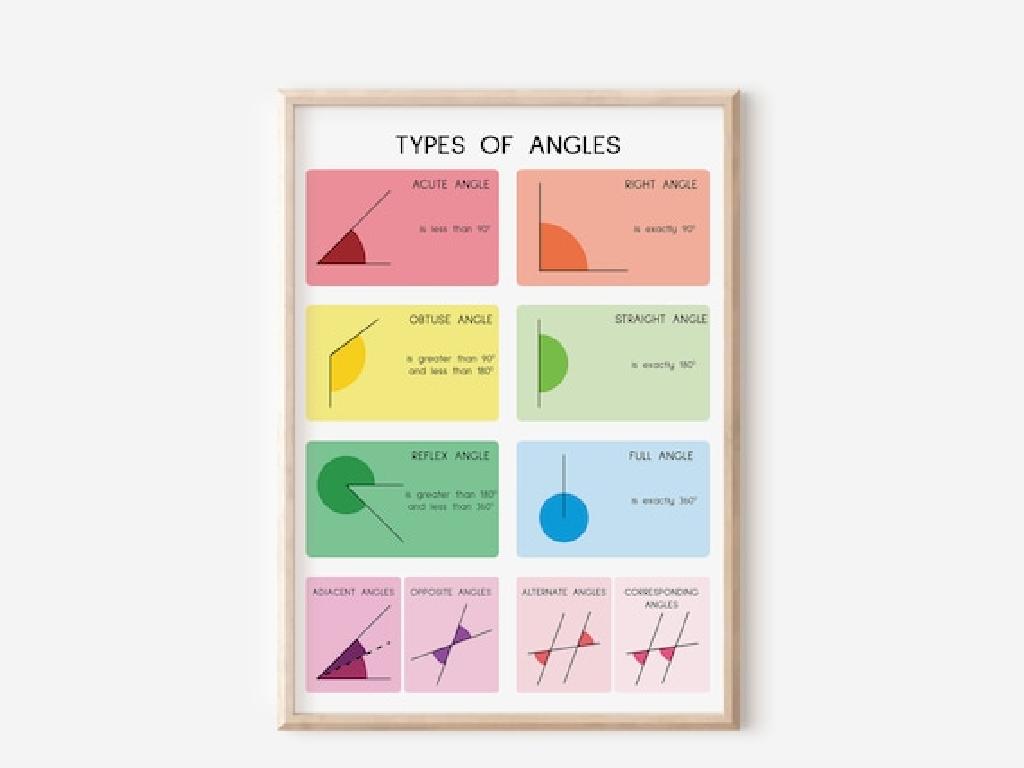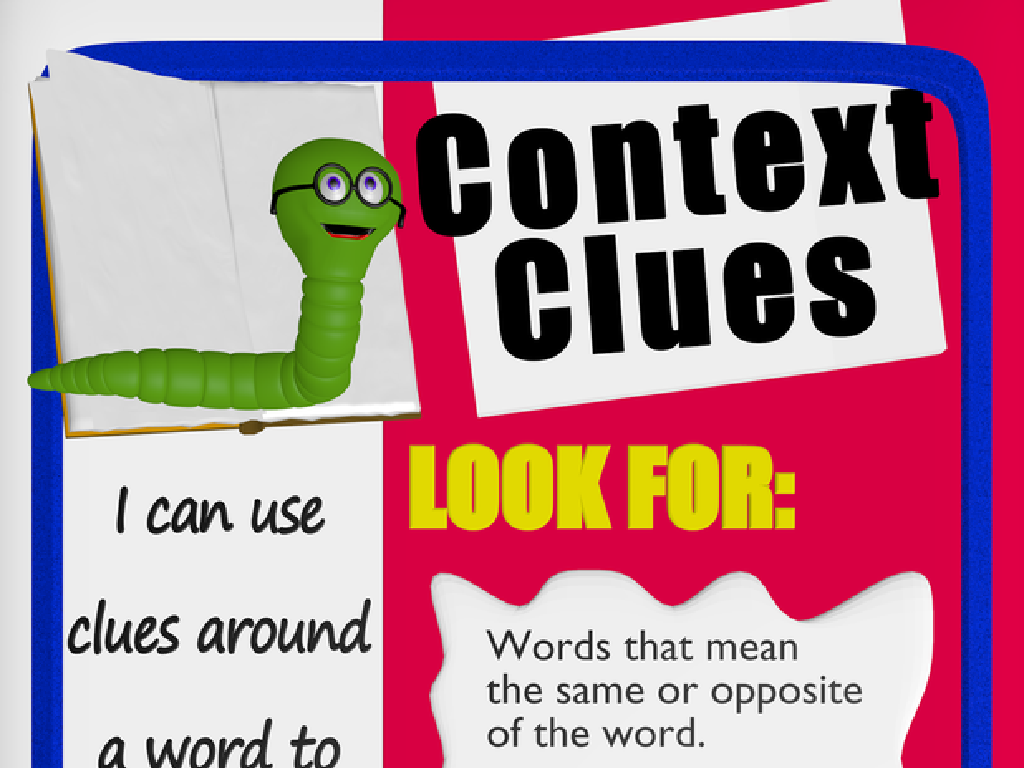Form And Use The Simple Past, Present, And Future Tense
Subject: Language arts
Grade: Fifth grade
Topic: Verb Tense
Please LOG IN to download the presentation. Access is available to registered users only.
View More Content
Introduction to Verb Tenses
– Understanding verb tenses
– Verb tenses tell us when an action happens
– The role of verbs in sentences
– Verbs are action words that show what’s happening
– Overview of past tense
– Past tense verbs often end in -ed, like ‘walked’
– Exploring present and future tenses
– Present tense: ‘walk’, Future tense: ‘will walk’
|
This slide introduces the concept of verb tenses to the students, explaining that verb tenses indicate the timing of an action. Emphasize the importance of verbs as the words that show action or state of being in sentences. Provide examples of verbs in past tense, highlighting the common -ed ending, and contrast with the simple present and the ‘will’ construction for the future tense. Encourage students to think of actions they do every day and how they would talk about them in different tenses. This foundational understanding will help them grasp more complex concepts in future lessons.
Exploring Simple Present Tense
– Define simple present tense
– Describes an action that is currently happening or a general truth
– When to use simple present tense
– Use it for habits, facts, and routines
– Examples: ‘I walk’, ‘She reads’, ‘They play’
– ‘I walk to school daily’, ‘She reads a book’, ‘They play at recess’
– Class activity: Find present tense verbs
|
The simple present tense is used to describe actions that are habitual or generally true. For example, ‘I walk to school every day’ shows a routine, while ‘The Earth orbits the Sun’ states a fact. In class, provide sentences and have students identify verbs in the simple present tense. This activity will help reinforce their understanding of how the simple present tense is used in everyday language. Encourage students to think of their own examples and share them with the class. This interactive approach will make the learning process engaging and memorable.
Exploring Simple Past Tense
– What is simple past tense?
– It describes actions completed in the past.
– When do we use it?
– Examples: ‘I walked’, ‘She read’, ‘They played’
– ‘Yesterday, I walked to the park’, ‘Last week, she read a novel’, ‘They played soccer last weekend’
– Class Activity: Sentence Conversion
– Change sentences from present to past tense.
|
This slide introduces the simple past tense, which is used to talk about actions that have already happened. Start by defining the simple past tense and discussing its use in describing completed actions. Provide clear examples using common verbs to illustrate the concept. For the class activity, prepare a list of present tense sentences for students to convert into the past tense. This will help them practice and understand the construction of the simple past tense. Encourage students to think of actions they did yesterday or last week to come up with their own examples. The activity should be interactive and allow for individual or group participation.
Exploring Simple Future Tense
– What is simple future tense?
– It shows an action that will happen later.
– When to use future tense
– Use it for promises or planned actions.
– Examples: ‘I will walk’, ‘She will read’
– ‘They will play’ shows a future action.
– Class Practice: Crafting future tense sentences
|
The simple future tense is used to describe actions that haven’t happened yet but will occur later. It’s often used for making predictions, promises, or stating plans. Start by explaining the definition and usage, then provide clear examples like ‘I will walk’, ‘She will read’, and ‘They will play’. For class practice, encourage students to think of actions they plan to do and help them form sentences using the simple future tense. This exercise will help solidify their understanding of how to form and use this tense correctly. Provide guidance and feedback as they create their sentences.
Irregular Verbs in Tenses
– Understanding irregular verbs
– Verbs that don’t follow regular -ed ending rules
– Examples: ‘I went’, ‘She ate’, ‘They wrote’
– ‘Go’ becomes ‘went’, ‘eat’ becomes ‘ate’, ‘write’ becomes ‘wrote’
– Activity: Matching tense forms
– Connect present tense verbs to their past forms
|
This slide introduces irregular verbs, which are verbs that do not follow the typical pattern of adding -ed to form the past tense. Provide clear examples of irregular verbs in the past tense to illustrate the concept. For the activity, prepare a list of present tense verbs and their irregular past tense counterparts for students to match. This will help reinforce their understanding of how these verbs change from present to past tense. The activity can be done as a worksheet, a game, or an interactive class exercise. Possible verbs to include in the activity are: run/ran, come/came, see/saw, etc. Encourage students to think of other verbs and use them in sentences.
Mastering Verb Tenses in Writing
– Consistency in verb tense
– Using the same verb tense makes writing clear
– Spotting tense inconsistencies
– Find verbs that don’t match the main tense
– Correcting tense errors
– Change verbs to match the surrounding text
– Writing with tense uniformity
– Practice by writing a story with one tense
|
This slide emphasizes the importance of maintaining a consistent verb tense throughout a piece of writing to ensure clarity and coherence. Students will learn how to identify verbs that are not in the same tense as the main narrative of a sentence or passage and how to correct these inconsistencies. The activity involves writing a short story, focusing on using either past, present, or future tense consistently. This exercise will help students understand the impact of verb tense on the flow of their writing. Encourage students to think about the time frame of their story and to choose verbs that accurately reflect this. Provide examples of inconsistent and consistent verb use, and discuss how these affect the reader’s understanding.
Class Activity: Time Travel Verb Tense Game
– Pair up for ‘Time Travel’ game
– Create sentences with different tenses
– Use past, present, and future verbs in sentences
– Share sentences with the class
– Explain the verb tenses used
– Describe why you chose each tense for your sentences
|
This interactive class activity is designed to help students practice and reinforce their understanding of verb tenses in a fun and engaging way. Students will work in pairs to create sentences that incorporate past, present, and future tenses. Encourage creativity and the use of a variety of verbs. After crafting their sentences, each pair will share their examples with the class and explain the reasoning behind their choice of tenses. This will not only help them to understand the concept better but also to learn from each other. Possible activities: 1) Have students convert a sentence from one tense to all three tenses. 2) Create a short story using a mix of tenses. 3) Identify the tenses in sentences from a book or story. 4) Write a ‘day in the life’ story with different tenses.

